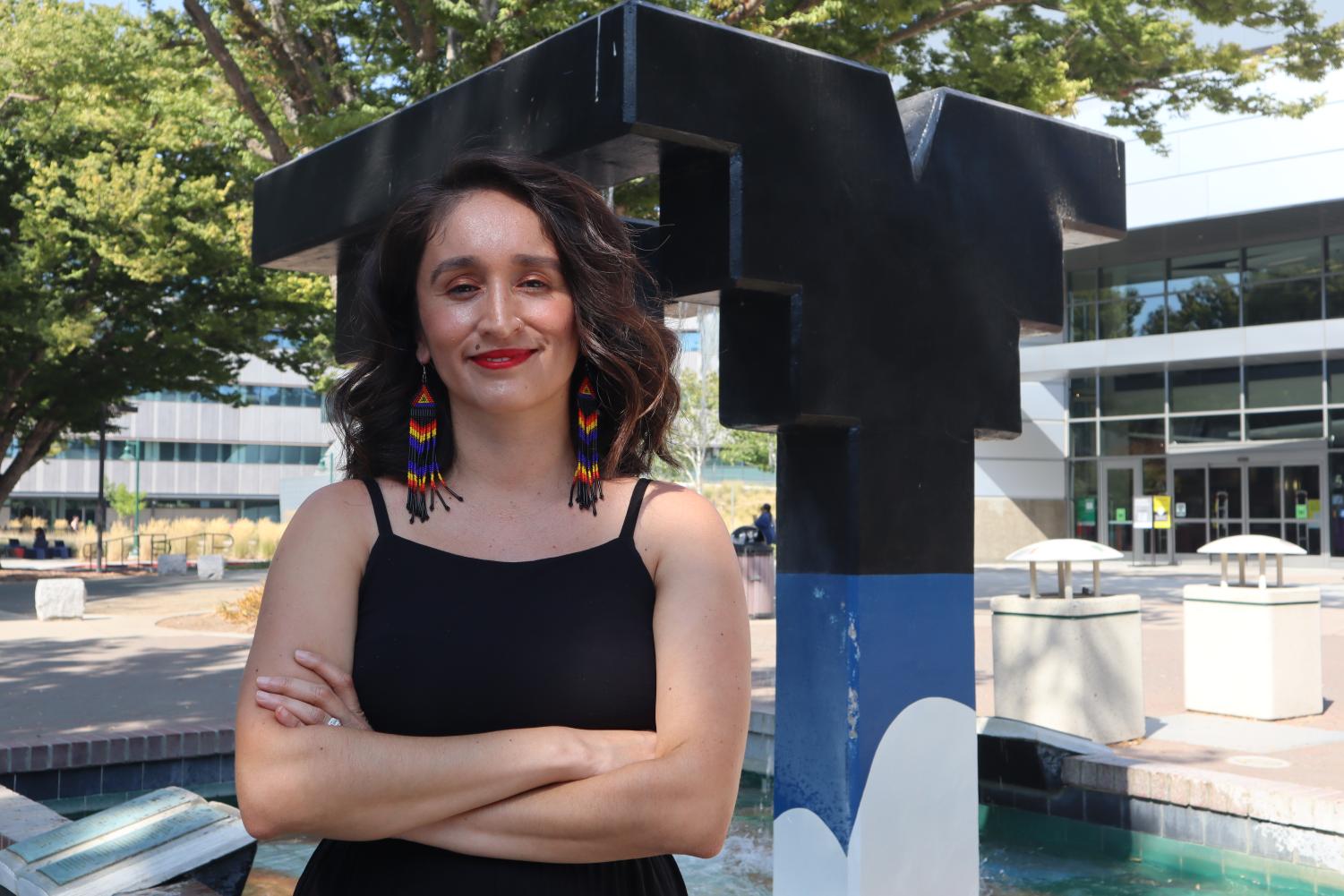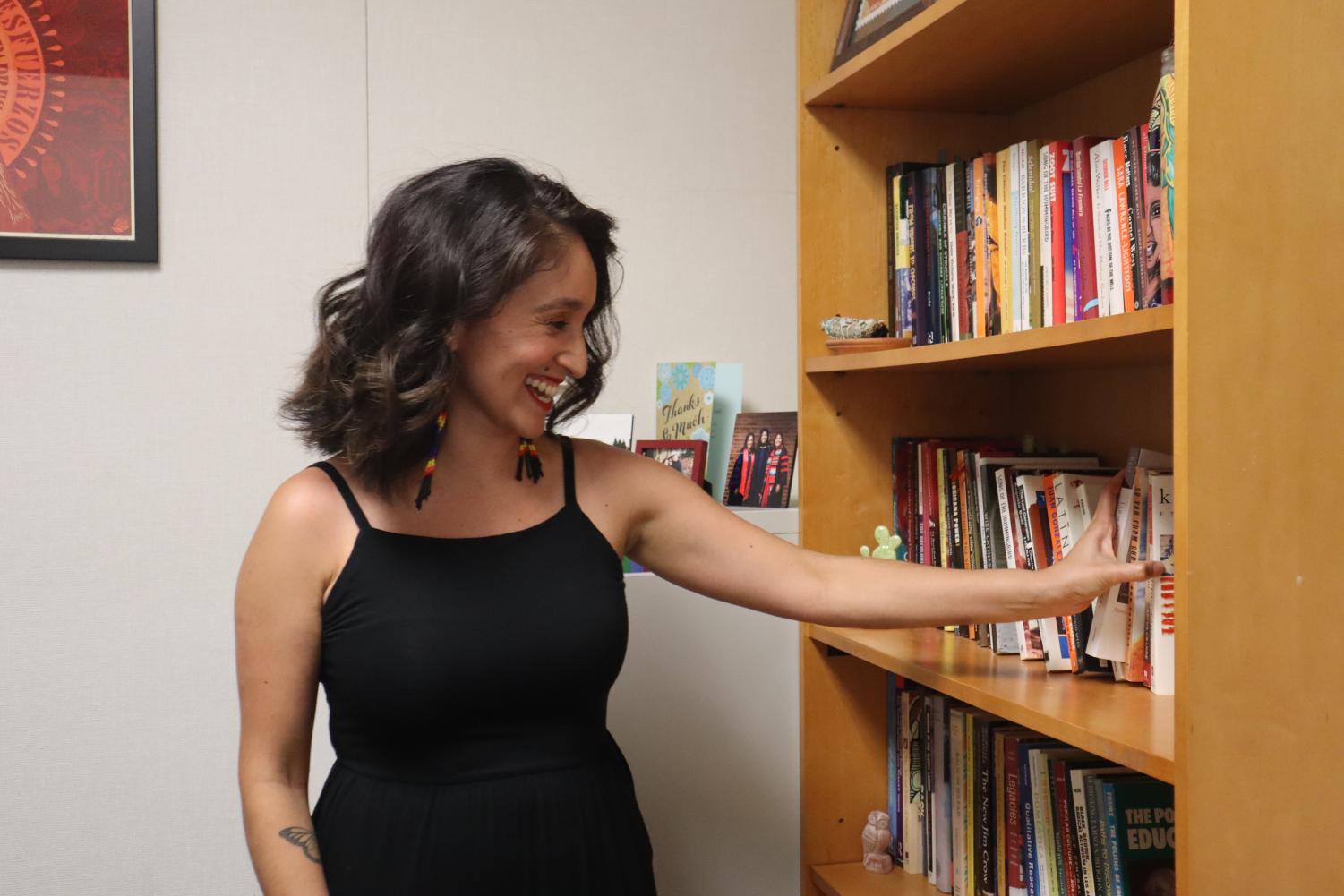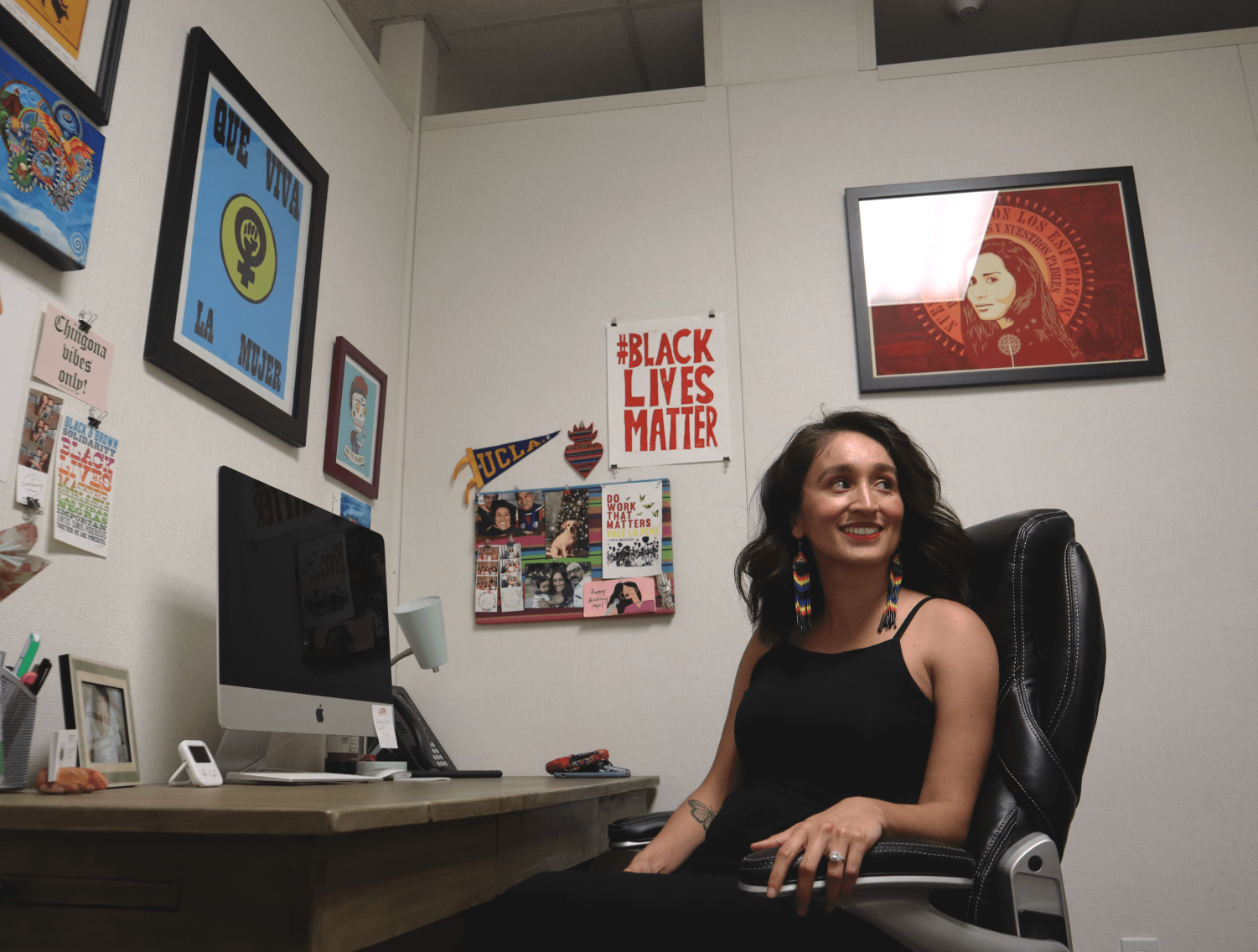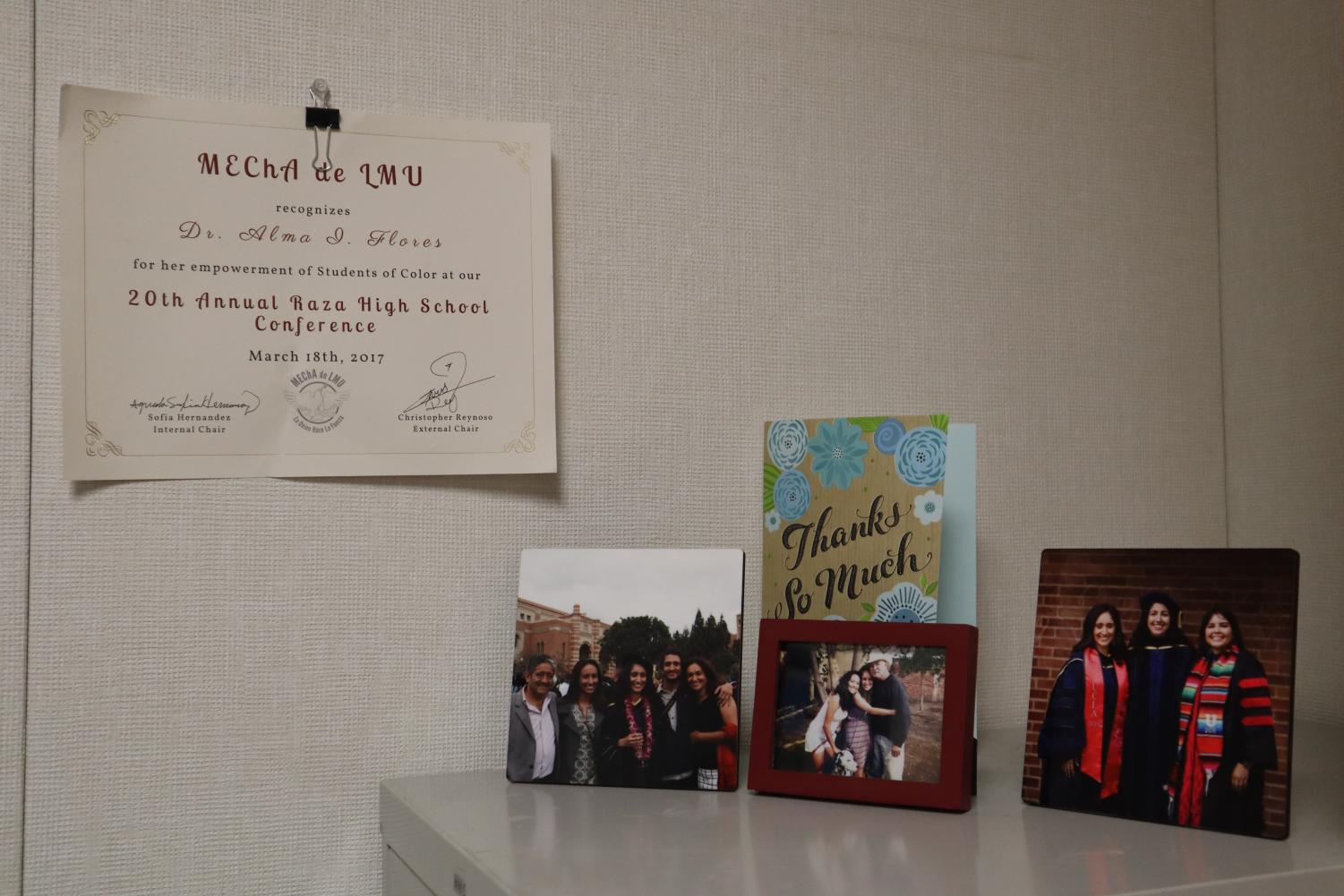Your donation will support the student journalists of Sacramento State University. Your contribution will allow us to purchase equipment and cover our annual website hosting costs.



October 5, 2021
Education assistant professor Alma Flores walked into her first day of orientation at Sacramento State with a romanticized view of the fourth most diverse university in the western United States.
As Flores looked around the room, she faced a harsh reality.
“I was maybe one of four faculty Chicana, or maybe two Chicana, I think, out of 80 faculty,” Flores said. “So I walked into a room, and again, you have to think about [the fact that] I'm coming from LMU [Loyola Marymount University] where the majority is white.”
Flores said she had romanticized the CSU because demographically their students were diverse and thought the faculty would be somewhat diverse, but it was “very white.”
“Immediately I felt like all eyes were on me,” Flores said. “It was isolating.”
Sac State is officially designated a Hispanic-Serving Institution by the U.S. Department of Education, meaning that the university has over 25% of undergraduate full time Hispanic students. According to professor of ethnic studies and Director of the Chicanx/Latinx Studies Program Elvia Ramirez, HSI status allows Sac State to compete for federal grant monies and other awards.
Story continues below the image.

Education assistant professor Alma Flores pulls out a book from her library in her office at Sacramento State on Sept. 7, 2021. Flores said that on her first day of orientation she was one of four or two faculty Chicana out of 80 faculty.
Since 2015, Sac State has been awarded $8.3 million in federal grant funds from programs that specifically support Hispanic-Serving Institutions , according to Shannon Rexin from the Office of Research, Innovation and Economic Development (ORIED) via email response.
“Despite our HSI status, there is a very large representation, equity and inclusion gap for Chicanx faculty at Sac State,” Ramirez said during her presentation “Teach-In” co-sponsored by the Center of Immigration, Race and Social Justice at Sac State and California Faculty Association in April.
RELATED: Professor calls for President Nelsen’s resignation amid systemic racism at Sac State
Growing up in Bakersfield, California, ethnic studies major Ricardo Fonseca Grijalva said he has never felt like there was any reflection of people of color within the faculty through K-12.
“I've heard of cases of Chicanx and Latinx faculty not feeling like they belong, that they don't feel necessarily welcome. So they leave, they just apply to other jobs.”
Elvia Ramirez
He said it was “mind boggling” to him to find professors that were the same culture as him at Sac State because he has never had a professor who reflected how he looks, speaks the languages he speaks and the common culture that they share.
Although Grijalva found professors at Sac State that shared the same culture and language, he also pointed out that the ethnic studies department only has three tenure track faculty that are Latinx.
“I see more service workers like janitors and other people claiming to be Latinx or assumed to be Latinx than in faculty [at Sac State],” Grijalva said.
In fall 2019, there were 141 Latino faculty members at Sac State, according to Sac State’s faculty profile out of 1,848 total faculty (7.6%). In contrast, there were approximately 10,659 Latino students on campus, representing 34% of the total student body.
In fall 2020, Sac State’s faculty profile reported there were 137 Latino faculty members in the university out of 1,817 total faculty (7.5%). In contrast, there were approximately 11,004 Latino students on campus, representing 35% of the total student body.
“These numbers clearly show that the Latinx faculty are extremely underrepresented, especially with these student demographics,” Ramirez said. “I think it also undermines the opportunities that students have the right to be taught by professors who look like them and who could potentially serve as role models and mentors.”
The low representation of Hispanic and Latino faculty results in the feeling of isolation. Isolation amongst Latino faculty also shapes the department, faculty and college/university climate that could affect retention, according to Ramirez.
“I've heard of cases of Chicanx and Latinx faculty not feeling like they belong, that they don't feel necessarily welcome,” Ramirez said. “So they leave, they just apply to other jobs.”
In an email response to The State Hornet, Ramirez also cited a California Faculty Association databook presented in an equity conference in 2020 stating that Sac State has the second highest Latino student to Latino faculty ratio in the entire 23 CSU campus system.
For every faculty member at Sac State, there are 119.86 Latino students, according to the databook.
“That means that Sac State is the 2nd least likely [CSU] campus to hire sufficient Chicanx/Latinx faculty,” Ramirez wrote in an email. “This results in ‘cultural taxation’ for Chicanx/Latinx faculty on our campus.”
Cultural taxation is a concept introduced in 1994 and described in the databook as a burden placed on ethnic minority faculty to service the university by acting as ethnic representation on committees or to demonstrate knowledge and commitment to a cultural group.
Ramirez added that it is great to see the university getting awards, an HSI status, grant money, and media attention so that faculty are able to get grants to do research.
“All this money [is] going into the university, but we're not investing those resources back into the community,” Ramirez said. “We're closed, we keep the doors closed to its faculty candidates.”
Flores pointed out that it is not just isolating being a faculty of color, but being a critically race conscious faculty of color. As one of the action-planning group members for Sac State’s Antiracism and Inclusive Campus Plan, Flores said the solution is not necessarily to hire just more bodies of color but having faculty of color who are critically race conscious that understand racism and sexism.
“Right now I'm trying to revise our freshman seminar course to align with a more anti-racist framework,” Flores said. “I'm facing a lot of resistance from my colleagues who, in theory, agree that we need to have a more anti-racist curriculum but in practice are quite resistant to it.”
Ramirez pointed out that faculty hire faculty, not the university’s administration. One of the ways that faculty resists the movement towards equity and anti-racism, according to Ramirez, is by continuously hiring a racially homogenous faculty workforce.
She added that the university’s leadership could do better in encouraging and supporting departments that want to diversify the faculty.
“The crux of the problem, in my opinion, is the faculty culture at Sac State,” Ramirez said. “There's just a lot of resistance from basically white faculty.”
RELATED: Sac State vice president for inclusive excellence leaving university
Flores added that not only does Sac State need to hire more faculty of color, but the retention of that faculty is just as important.
Story continues below the image.

Sacramento State’s education assistant professor Alma Flores sits in her office chair looking at the art she has displayed on her walls on Sept. 7, 2021. Flores said while she cannot speak for the Black faculty that have left Sac State, she has thought of leaving Sac State due to the challenges placed on faculty of color.
“We're seeing an exodus of just faculty of color leaving,” Flores said. “I served on the anti-racist planning committee, and we lost about three black faculty or administrators in the spring. So what does that say? We're hiring faculty of color, but we're not retaining them.”
RELATED: Sac State director of inclusive excellence learning departing university
Flores said while she cannot speak for the Black faculty that have left Sac State, she has thought of leaving the university due to the challenges placed on faculty of color.
“For me, again, it's challenging to work in a space where I don't always feel like folks understand or respect the challenges that are placed on faculty of color, or [they] are [not] putting their resources to supporting junior faculty of color who are not tenured yet, or who don't do the work of unlearning racism,” Flores said.
These challenges make it difficult for faculty like Flores who are not just faculty of color, but teach courses on racism and oppression where pushback from students is expected in evaluations.
“I think when you are faced with racial microaggressions, not just from students but your colleagues, that's not a very healthy working environment,” Flores said. “And so yeah, then you're kind of like ‘this is not worth it.’”
“The crux of the problem, in my opinion, is the faculty culture at Sac State. There's just a lot of resistance from basically white faculty.”
Elvia Ramirez
Grijalva said he is a primary caretaker for his family, so he has to take his family to doctor's appointments, cooks and cleans. He thinks professors he has had that happen to be white or other racial identities do not understand the complexities in Latinos’ daily lives.
“I feel like other white faculty don't understand that and actually look down on it, unless you are a mother or a white mother or someone who you know that they would cater to,” Grijalva said. “I feel like me as a queer, biracial Latinx person, when I would tell them like ‘hey, I can't attend class, that I have to go to work, I have to do this,’ it's almost like they didn’t believe me.”
RELATED: Sac State Faculty Senate prepares opposition to CSU implementation of AB 1460
Grijalva called it a “slap in the face” when an institution like Sac State claims an anti-racism identity after his attendance at a faculty senate meeting where the Assembly Bill 1460 which would add an ethnic studies requirements in CSUs was discussed.
“I was there arguing with these white elite professors who did not support ethnic studies, and it was a slap in the face because it was disrespectful the way they dismissed us,” Grijalva said.
He said they would not listen to any short papers that tried to summarize why ethnic studies is needed and why they needed to support AB 1460.
“All I'm seeing is talk,” Grijalva said. “I'm not seeing the walk, and we can see that with how professors treat students.”
Story continues below the image.

Sacramento State’s education assistant professor Alma Flores hangs an award from Loyola Marymount University’s Movimiento Estudiantil Chicanx de Aztlán that recognizes her for her empowerment of students of color. Flores said that not only does Sac State need to hire more faculty of color, but the retention of that faculty is just as important.
Aside from the disproportionate ratios from Latino professors to Latino students at Sac State, according to Grijalva, the actions of this university do not fulfill the “talk.” He cited the incident on May 1, 2020, where Sac State economics professor Tim Ford and his wife Crystal Ford used racial slurs towards their neighbors. Ford was not fired and still works at Sac State.
RELATED: Sac State professor seen in viral video where wife uses racial slur against neighbors
“How can you claim to be anti-racist, and you're not taking the simple steps that are right there in your face,” Grijalva said. “More faculty that represent the students, more accountability towards racist faculty and more support for your students, more support for your faculty. These people work day in and day out. They work extremely hard, and they're not rewarded for that. If anything, that is just more labor on them.”
The more Latino professors, the more Latino students can relate better to faculty in the classroom, according to Ramirez. The integration then enhances students’ sense of belonging within the classroom, she said.
“That can help with retention, that can help with graduation, that could also help with aspirations,” Ramirez said. “They might feel inspired or motivated and encouraged to go into graduate school, for instance, or they see more of themselves occupying these spaces like, ‘[if] they can do it, I can do it too, right?’ It's a source of encouragement.”
In 2019, the graduation rate for Latino students at Sac State was 20.7%, according to an article by the university.
Ramirez added that Sac State needs to support students who need mentors and faculty role models but also needs to support people with PhDs that want to find jobs at universities. She said if universities are not opening up their doors to Latinos, it's a problem, a matter of equity and opportunity.
Regarding the low representation of Latino faculty, Ramirez said there are a lot of excuses that usually place the blame on the Chicano and Latino population for being underrepresented.
“It's really unfair to blame minoritized oppressed communities for their subordination, for their oppression, for their underrepresentation, for the inequality,” Ramirez said. “I think institutions need to take a really hard look at themselves and look at the ways that their practices perpetuate exclusion of minority populations on university campuses.”
Sac State received $8.3 million in federal grant funds after a review process of its proposed projects by a panel of subject matter experts and a review by the federal agency, according to Rexin from ORIED.
Additionally, the university received $6.7 million in CARES Act Higher Education Emergency Relief (HEERF) funding for Minority Serving Institutions based on Sac State’s status as an HSI and an Asian American and Native American Pacific Islander-serving institution, Rexin said. This funding is being administered by the division of administration and business affairs.
The proposed project ideas from the HSI discretionary grants were evaluated by a committee of members of the president's Cabinet, taking into account the U.S. Department of Education’s priorities and those that will have a campus-wide impact. Rexin wrote that the National Science Foundation HSI program proposed projects are advanced by faculty and staff. All the proposed projects are reviewed and approved by the appropriate chairs, deans, ORIED and by the division of administration and business affairs.
Lynn Tashiro, director of the Center for Teaching and Learning, principal investigator for INSPIRE and Building Capacity and professor of physics at Sac State said it was not a discretionary grant that did not allow the university to utilize the funds how they wanted to.
“The one thing we agreed on is we wanted something for students,” Tashiro said. “Some of the options were advising programs and things like that. The one thing we agreed on is that jobs for students on campus was a huge retention bonus if we could combine the need to serve students with employing students on campus.”
As a result, the university put together the peer network, and that network was going to fund mini-grants to any entity on campus where students are serving other students, according to Tashiro. Half of the grant went into INSPIRE and the other half went towards getting data in the hands of project directors and faculty to help sort out where the systemic inequities are at Sac State.
“Technically you're not serving until you have that identity, until you have some evidence that you are indeed serving those students, so we wanted to actually achieve that,” Tashiro said. “So we did that through funding the peer programs for the students and also looking at our institutional data to look at equity gaps and other kinds of indicators that might show us where we are not providing equitable services.”
INSPIRE was the first expanding serving institution grant to get awarded, according to Tashiro.
Aside from these projects, there are other areas of support on campus for Latino students. Viridiana Diaz, associate vice president of strategic students support programs, oversees about nine centers and programs that serve many Latinos on campus. One of those programs is the college assistance migrant program, which is not funded through an HSI grant but is a federally funded program.
Due to the difficulty to outreach and recruit students, the college assistance migrant program reaches anywhere between three to 4,000 students in their high school presentations to about 90 rural schools in an effort to recruit many to Sac State.
“It brings a lot of students to Sac State that are from a Latinx background,” Diaz said. “Then, in addition to the recruitment piece which is very significant, we focus on first-year retention with those students and then integrating them into Sac State.”
The retention of students includes services such as the freshman seminar course, academic advising, personal counseling, career counseling and a leadership program that connects students to a mentor, according to Diaz.
Diaz also oversees the Dreamer Resource Center and the Serna Center. The DRC is designed to provide services that are not always offered by the university, according to Diaz, because undocumented students have unique needs that require support beyond academic. For example an immigration clinic on campus provides legal advice at no cost to students, staff and faculty who may need that support.
Page design by Mercy Sosa.
Your donation will support the student journalists of Sacramento State University. Your contribution will allow us to purchase equipment and cover our annual website hosting costs.
